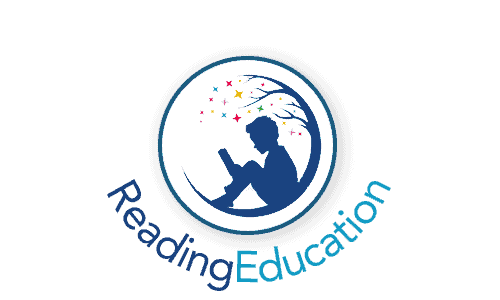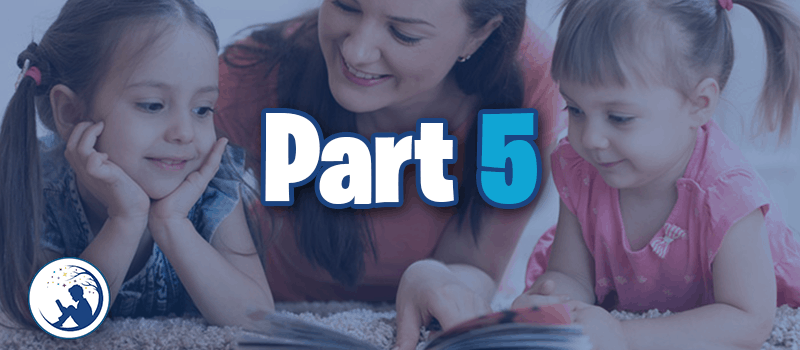Welcome to the fifth part of our ‘Teaching Your Child to Read Year-by-year’ series! In this set of articles, we’ll be looking at what your child will be learning at nursery or school and what you can do to further their reading skills at home. We’ll focus on eight age groups, which are as follows: Ages 3-4 years; ages 4-5 years, ages 5-6 years; ages 6-7; ages 7-8; ages 8-9; ages 9-10; ages 10-11. There will be one dedicated article for each age group, as well as links to all the other articles in this series to make navigation between articles as straightforward as possible (see the bottom of this page for links to other articles in this series).
Learning to Read: Children Aged 7-8 Years Old
By this stage of their school life, your child will (hopefully) be well on their way to becoming a proficient, independent, and confident reader. Those children who have a firm grasp of phonics and word-reading will typically alter the emphasis of their reading towards comprehension.
What will your child be learning at school?
By the ages of seven and eight, your child will be taught more advanced aspects of reading and comprehension than in previous school years. Both the reading itself and the activities and tasks that accompany said reading will increase in both difficulty and complexity. In most instances, this will include:
Learning about root words, suffixes, and prefixes. In preceding years, your child will have started to learn about suffixes (a set of letter added to the end of a word. For example, ness creates a noun. Happy turns into happiness); however, once they reach this stage of learning, they will be introduced to both root words and prefixes. The former – root words – are words that stand on their own with the need for either prefixes or suffixes; the latter – prefixes – are a set of letters added to the start of a word to make a new word. For example, ‘clean’ becomes ‘unclean’, with ‘clean’ being the root word. Your child will utilise their understanding of suffix, prefixes, and root words to help them figure out the meaning of words and how meanings change when suffixes and prefixes are added.
Reading and studying a wide range of books and retelling stories. By this age, your child will have read and listened to numerous different types of books, including, but not limited to stories, myths, legends, and fairy tales, and will often know them by heart. Retelling these stories and tales will not only help your child to learn about the language used in stories but lay a fundamental foundation for public speaking skills, which will be vital as they get older.
Performing play scripts and poems. It is at this stage of learning that your child will be introduced to play scripts and poems, and will often be given the opportunity to perform in front of an audience. Doing this will help your child to develop further understanding of the text as well as learning how to read out loud with expression.
Discussing words and phrases they find interesting. Your child will be encouraged to discuss the language used in the various books they read, exploring why the authors have chosen specific words and thinking about why certain words and phrases work well. Doing this will help your child develop their understanding of the books and texts they have read, and will aid their creative writing skills too.
Reading between the lines. At times, information in a book or text is clear and easily understood. However, many texts are typically a little more complicated and require some degree of inference to grasp what is being said. ‘Inference’ is when the author of a book leaves the reader to read between the lines to obtain some elements of information. Your child will need to make sense of details that aren’t explicitly stated. For example, instead of the text saying simply ‘It was raining’, it might say, ‘Michale shook the water from his brolly and carefully placed her soaking raincoat on the radiator’. Being able to read between the lines and make inferences is a vital skill for comprehension at this stage of learning.
Predicting what happens next. Your child will be asked to make predictions about the book, stories, and texts they read. This could involve predicting what will happen next or what a certain character might do or say. The reason for asking a child to do this is because it helps the teacher check their understanding of what is happening in the text.
Starting to use a dictionary to look up the meaning of words. Your child will not only be introduced to dictionaries but also asked to use them to check the meaning of words they’ve read.
Reading Tips & Activities for 7-8 Year Olds

As your child gets older, the number of games, activities, and other forms reading development tasks increases almost exponentially. They will be learning and picking things up at a much faster rate; therefore, it is vital that you foster their reading skills and ability at home. Here are a few of our top tips for home-based reading development.
1. Listen To Your Child Read As Often As You Can
By the time your child reaches this stage of school, it’s highly likely that they’ll be allowed to choose their own book for home reading. Although it’s common for children of this age to read on their own (either in their heads or out loud), it is still crucial that you listen to them read as often as you can. By doing so, you can help them pronounce any words they are unfamiliar with and ensure that they understand what the text is about. Furthermore, seeing words in print is beneficial for your child’s overall English skills, as reading out loud will help them to understand words, how to spell them, and to observe how punctuation and grammar are used to create meaning.
2. Read To Your Child
As soon as your child is able to read on their own, it is all too tempting to leave to it and read by themselves. However, it is important to remember that reading a book to them can be just as beneficial as independent reading. Reading books to your child can help them to build langue skills in addition to comprehension, as it allows them access to books that they cannot yet read independently. Moreover, it’s also a great way to relax and bond with your child!
3. Never Give Up!
At the ages of seven and eight, your child will likely want to read more challenging books. While this is undoubtedly a good thing, there might be instances when they struggle with the text, get frustrated and want to stop. This is entirely natural, but it is imperative that you’re there to help them through any tough patches by reading with them. One great way to do this is to take it in turns to read a page or pretend to be different characters in the story, as this will help them re-engage with the book.
4. Talk About Reading
One of the best you and your child can get into is talking about books. Where fictional books are concerned, discuss what happens in a story or what the characters have said and done; whereas with non-fictional books, talk about which bits of information they found useful or interesting. In addition, talk about whether or not they liked the book (and why) and let them know that it’s ok not to like books!
5. Use Pictures
Although the use of pictures might, on the face of it, seem a better option for children under the ages of seven and eight, they’re actually an excellent way for children of all ages to practise their comprehension skills. Discuss what is happening is a certain picture; talk about what the characters might be feeling and thinking, or what might happen next in the story.
6. Discuss The Meaning Of Words
If your child comes across a new word when reading a book, discuss what the word might mean. Encourage them to use the words and sentences around the word to try to figure out what the word means. Once the meaning of the word has been talked about, ask your child if they can think of any other ways the word could be used. If they’re unsure, given them an example sentence and explain to them how the word can be used.
Thank you for taking the time to read our blog; we really appreciate your time and hope you found this article informative and helpful. If you’re interested in reading the other posts in the ‘Teaching Your Child To Read Year-By-Year’ series, please use the links below:
Part 1 (Ages 3-4)
Part 2 (Ages 4-5)
Part 3 (Ages 5-6)
Part 4 (Ages 6-7)
Part 6 (Ages 8-9)
Part 7 (Ages 9-10)
Part 8 (Ages 10-11)
Thanks again for your time! If you have any comments, questions, or suggestions, please don’t hesitate to get in touch!

